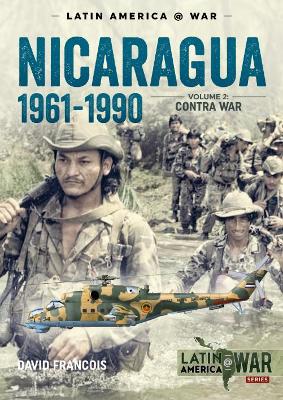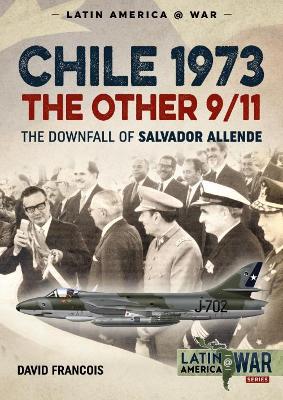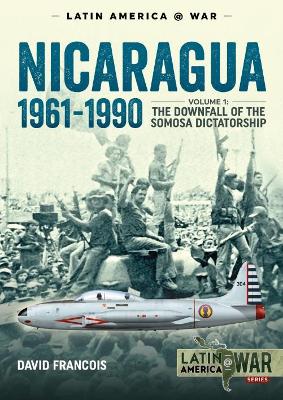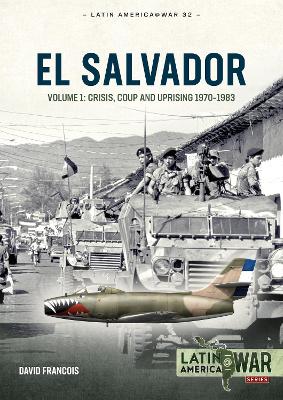Latin America@War
4 total works
In 1979, the Sandinista government established itself in power in Managua, the capitol of Nicaragua. It found the country ruined by the long war against the Somosa dictatorship and natural disasters alike, and nearly half of the population either homeless or living in exile. Attempting to restructure and recover the underdeveloped economy, Sandinisas introduced a wide range of reforms and a cultural revolution.
Considering the Sandinistas to be 'Cuban-supported Marxists' and therefore a major threat to the US domination of Latin America, in 1980-1981 the USA began supporting the creation of the Contrarevolutionary forces (better known as 'Contras'), and thus helped provoke a new war that was to rage through Nicaragua until 1988.
Leaning upon extensive studies of the armed groups involved, and their combat operations of the 1981-1988 period, Nicaragua, 1961-1990, Volume 2 provides an in-depth coverage of military history during the second phase of one of bloodiest, and most-publicised armed conflicts of Latin America in modern times. Guiding the reader meticulously through the details of the involved forces, their ideologies, organisation and equipment, this book offers a uniquely accurate, blow-by-blow account of the Nicaraguan War and is profusely illustrated with more than 120 photos, maps, and colour artworks.
Considering the Sandinistas to be 'Cuban-supported Marxists' and therefore a major threat to the US domination of Latin America, in 1980-1981 the USA began supporting the creation of the Contrarevolutionary forces (better known as 'Contras'), and thus helped provoke a new war that was to rage through Nicaragua until 1988.
Leaning upon extensive studies of the armed groups involved, and their combat operations of the 1981-1988 period, Nicaragua, 1961-1990, Volume 2 provides an in-depth coverage of military history during the second phase of one of bloodiest, and most-publicised armed conflicts of Latin America in modern times. Guiding the reader meticulously through the details of the involved forces, their ideologies, organisation and equipment, this book offers a uniquely accurate, blow-by-blow account of the Nicaraguan War and is profusely illustrated with more than 120 photos, maps, and colour artworks.
In 1970, Salvador Guillermo Allende Gossens, a physician and leftist politician, was elected the President of Chile. Involved in political life for nearly 40 years, Allende adopted a policy of nationalisation of industries and collectivisation - measures that brought him on a collision course with the legislative and judicial branches of the government, and then the centre-right majority of the Chilean Congress. Before long, calls were issued for his overthrow by force. Indeed, on 11 September 1973, the military - supported by the Central Intelligence Agency (CIA) of the USA - moved to oust Allende, and surrounded La Moneda Palace. After refusing a safe passage, Allende gave his farewell speech on live radio, and La Moneda was then subjected to air strikes and an assault by the Chilean Army. Allende committed suicide. Following Allende's death, General Augusto Pinochet installed a military junta, thus ending almost four decades of uninterrupted democratic rule in the country. His repressive regime remained in power until 1990. Starting with an in-depth study of the Chilean military, paramilitary forces and different leftist movements in particular, this volume traces the history of the build-up and the ultimate clash during the coup of 11 September 1973. Providing minute details about the motivation, organization and equipment of all involved parties, it also explains why the Chilean military not only launched the coup but also imposed itself in power, and how the leftist movements reacted. Illustrated with over 100 photographs, colour profiles, and maps describing the equipment, colours, markings and tactics of the Chilean military and its opponents, it is a unique study into a well-known yet much under-studied aspect of Latin America's military history.
AfterIn the wake of the US invasion of Nicaragua in 1912, the country came under the rule of the Somoza family, which imposed a brutal and corrupt military dictatorship. A low-scale insurgency of students, supported by peasants and other anti-Somoza elements of the society developed already in the 1960s. By the 1970s, the country became embroiled in a brutal insurgency. Supported by Cuba, a coalition of students, farmers, businessmen, clergy and a small group of Marxist launched a major war in 1978, which resulted in the downfall of the Somozas, a year later.
The Sandinista government established in Managua of 1979 found the country ruined by the long war and natural disasters, and nearly half of the population either homeless or living in exile. Attempting to restructure and recover the underdeveloped economy, Sandinisas introduced a wide range of reforms and a cultural revolution.
Considering the Sandinistas for 'Cuban-supported Marxists' and therefore a major threat for the US domination of Latin America, in 1980-1981 the USA began supporting the creation of the Contrarevolutionary forces (better known as 'Contras'), and thus helped provoke a new war that was to rage through Nicaragua for most of that decade, and is going to be covered in Volume 2 of this mini-series.
Leaning upon extensive studies of involved armed groups, and their insurgencies in the 1960s and 1970s, 'Nicaragua, 1961-1990, Volume 1' is providing an in-depth coverage of military history during the first phase of one of major armed conflicts of Latin America in modern times. Guiding the reader meticulously through the details of involved forces, their ideologies, organisation and equipment, this book is offering a uniquely accurate, blow-by-blow account of the Nicaraguan War and profusely illustrated with more than 120 photos, maps, and colour artworks
The Sandinista government established in Managua of 1979 found the country ruined by the long war and natural disasters, and nearly half of the population either homeless or living in exile. Attempting to restructure and recover the underdeveloped economy, Sandinisas introduced a wide range of reforms and a cultural revolution.
Considering the Sandinistas for 'Cuban-supported Marxists' and therefore a major threat for the US domination of Latin America, in 1980-1981 the USA began supporting the creation of the Contrarevolutionary forces (better known as 'Contras'), and thus helped provoke a new war that was to rage through Nicaragua for most of that decade, and is going to be covered in Volume 2 of this mini-series.
Leaning upon extensive studies of involved armed groups, and their insurgencies in the 1960s and 1970s, 'Nicaragua, 1961-1990, Volume 1' is providing an in-depth coverage of military history during the first phase of one of major armed conflicts of Latin America in modern times. Guiding the reader meticulously through the details of involved forces, their ideologies, organisation and equipment, this book is offering a uniquely accurate, blow-by-blow account of the Nicaraguan War and profusely illustrated with more than 120 photos, maps, and colour artworks



